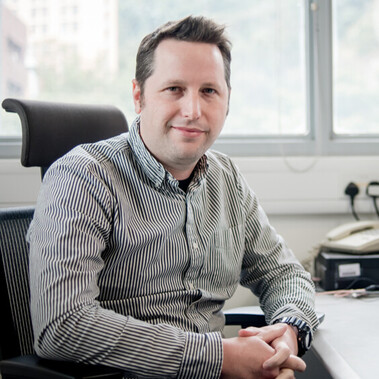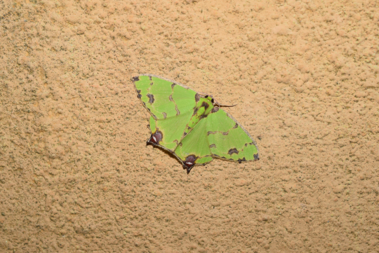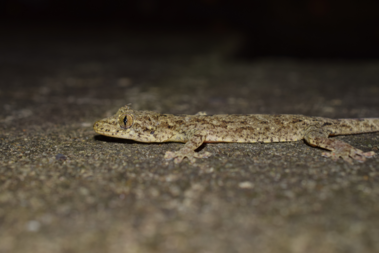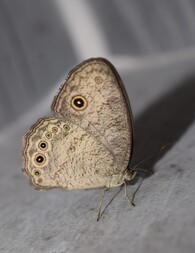 | Dr Timothy BONEBRAKE Associate Dean of Science (Teaching & Learning) and Associate Professor of School of Biological Sciences
Global Change and Tropical Conservation Lab
|
1. What do you think are your most significant research accomplishments, and what has been the impact of your research?
When I started my PhD, there was very little attention paid to how climate change might affect tropical species. But it turns out that there were (and are) good physiological and climatic reasons to be concerned. I did theoretical work and fieldwork in Central America to explore this issue from different perspectives. It is now well established that tropical biodiversity is likely to be highly vulnerable to climatic warming – my research played a small role in demonstrating why and how. Hopefully this will help in developing plans to manage the consequences for biodiversity and humanity.
And that actually leads to some of the work I’ve been doing more recently. I had been studying climate-driven species redistribution, how species change their ranges in response to warming. But a few years ago, I became really interested in the human aspects of this – how such species redistribution might affect disease dynamics or food security. Ultimately, this research has highlighted the importance of novel management and systems approaches in addressing climate change challenges. In general, much of my research has shifted towards studying biodiversity change and the direct impacts for people and health. I have studied wildlife trade for several years, but the pandemic really emphasised the health risk of such activities. This has then also become a very active area of research in my lab.
| A spectacular butterfly of Hong Kong Artipe eryx found during field surveys. |
The thermal tolerance of Chinese Geckos (Gekko chinensis) have been studied in Hong Kong to better understand the vulnerability of nocturnal species to warming. |
2. Please give a brief description of 1 - 2 ongoing research projects that best reflect your visions in the scientific field.
Though trained as a butterfly biologist, I have expanded my research program to cover a wide range of plants, snakes, birds and mammals. The diversity in animal taxa presents both challenges and opportunities. In the past couple of years, my group has done a lot of research on pangolins. All eight species globally are threatened by demand for their scales in Traditional Chinese Medicine (and other threats). I saw the issue first-hand while conducting field work in Cameroon in 2013, when I saw live pangolins for sale on the roadsides. It turns out, a large proportion of the pangolin scales seized in Hong Kong come from Cameroon. So, my group is applying a wide range of conservation forensics tools (genomics, stable isotopes, etc.) to characterise trade dynamics and assist in the regulation of the trade. We also have close collaborative links with the School of Public Health to determine what links there are between trade and pathogen emergence.
My students and I also continue to study climate change impacts on tropical biodiversity. One aspect of this which I have been actively studying for some time now is nocturnal biodiversity. Day-active species experience very different environments relative to night-active species. And so, we anticipate that there might be differential impacts of climatic warming on diurnal and nocturnal species. We have been studying this in Lepidoptera (butterflies and moths), lizards (skinks and geckos), and even mammals.
Dr Bonebrake doing field work in Cameroon in 2019. | From left to right: Dr Michel DONGMO, Dr Shuang XING, and Dr BONEBRAKE searching for butterflies in Cameroon in 2018. |
The species Bicyclus dorothea has been the subject of continued ecological and evolutionary study in Cameroon, showing how plasticity in thermal tolerance is shaped by both climate and habitat. The results of this work shed light on the climate change vulnerability of tropical forest species. |
3. What is the most important question you want to address?
How can we save biodiversity? I am actually driven by a lot of different questions in ecology and evolution. I have always been fascinated by the natural world. But the main thing that motivates all of the work in my lab is, how can we use this for the conservation of biodiversity?
The three main threats to biodiversity that my research currently covers are climate change, urbanisation, and wildlife trade (not in any order). Some of the biggest challenges are when we see synergistic interactions between these threats for species and populations. Much of my current work is finding solutions that address multiple threats at once.
4. Can you give an example of your translational work?
Most of the work I do is translational in some way. I got into science initially because I wanted to change policy and conserve biodiversity. In fact, in college I worked in politics and initially thought that that was my preferred career – but I found that the day to day work of politics did not suit me. And then, when I worked as an undergraduate in an ecology lab, I realised my calling and never looked back.
My research on the pangolin trade has considerable relevance to recent and active discussions regarding the regulation of wildlife trade. Around the time we were first presenting our results of Chinese pangolin seizures and highlighting the scale of the trade in Asia, all pangolin species were moved to Appendix I of CITES (Convention of International Trade in Endangered Species of Wild Flora and Fauna) in 2016, meaning their trade was heavily regulated. This was a welcome increase in regulation of the trade – but we found that seizure numbers only increased in Hong Kong since then. So, there is a lot more work to be done.
5. Where do you see yourself in five years/ten years? What do you want to accomplish the most?
I guess that part of the excitement in this job is that I don’t know! If you told me ten years ago that I would be studying mammals, wildlife trade, and pathogens… I would have thought you were crazy. But here I am. In five/ten years, I see myself continuing to run models for a better understanding of biodiversity responses to environmental change and I will probably still be exploring wild places, overseas and in Hong Kong.
This year I also took on a new challenge as Associate Dean of Teaching & Learning in the Faculty of Science. I really enjoy teaching and feel that it is one of our most powerful tools in creating a sustainable society. I have only been doing the work for about a month now but it has been very rewarding. I enjoy working with students and faculty alike, and problem solving to ensure we are able to offer a high quality and fun learning environment within the Faculty. And I definitely want to emphasise the fun!
6. How would you bridge the gap from your research to research users?
Getting science into the hands of practitioners and policy makers takes a lot of work. My lab spends a lot of time meeting with government officials, NGOs, and corporations – we talk about the science we are currently doing and make recommendations for how to conserve biodiversity. Sometimes this comes to highlighting simple facts. For example, most people do not know that we have otters living in Hong Kong! Other times, this is more complex, examining laws or administrative procedures that may require change or updating. But the work is important, and publishing papers is certainly not itself sufficient to make an impact.
7. Who has influenced you the most?
I have been very fortunate to have outstanding mentors throughout my career. When I arrived at HKU, Professors David DUDGEON and Yvonne SADOVY were (and still are!) massively influential. I knew their science was good… but it was not until I arrived that I saw what fantastic and engaging teachers they were. I also saw first-hand how much time and effort they put into effectively conserving freshwater and marine biodiversity. Their conservation efforts have had clear impacts in both Hong Kong and more broadly in the region and globally.
8. How would you go about motivating yourself when you are going through a low point?
When I am going through a low point, or a period of low creativity and energy, I usually do one of two things. I will either track down a student to chat with or I will play some guitar (sometimes I do both at the same time). Music is a big source of inspiration to me. And so are my students.
9. Can you tell us more about your research group? What are the roles and the missions?
My research group is the Global Change and Tropical Conservation lab. Our mission is to conserve tropical biodiversity and do so bringing together quantitative modelling tools and on-the-ground field work. The lab is diverse in backgrounds and interests. We complement each other well in terms of expertise, allowing us to work together efficiently to tackle complex research questions. It is tough work sometimes – but we have a lot of laughs and exciting eureka moments along the way.




